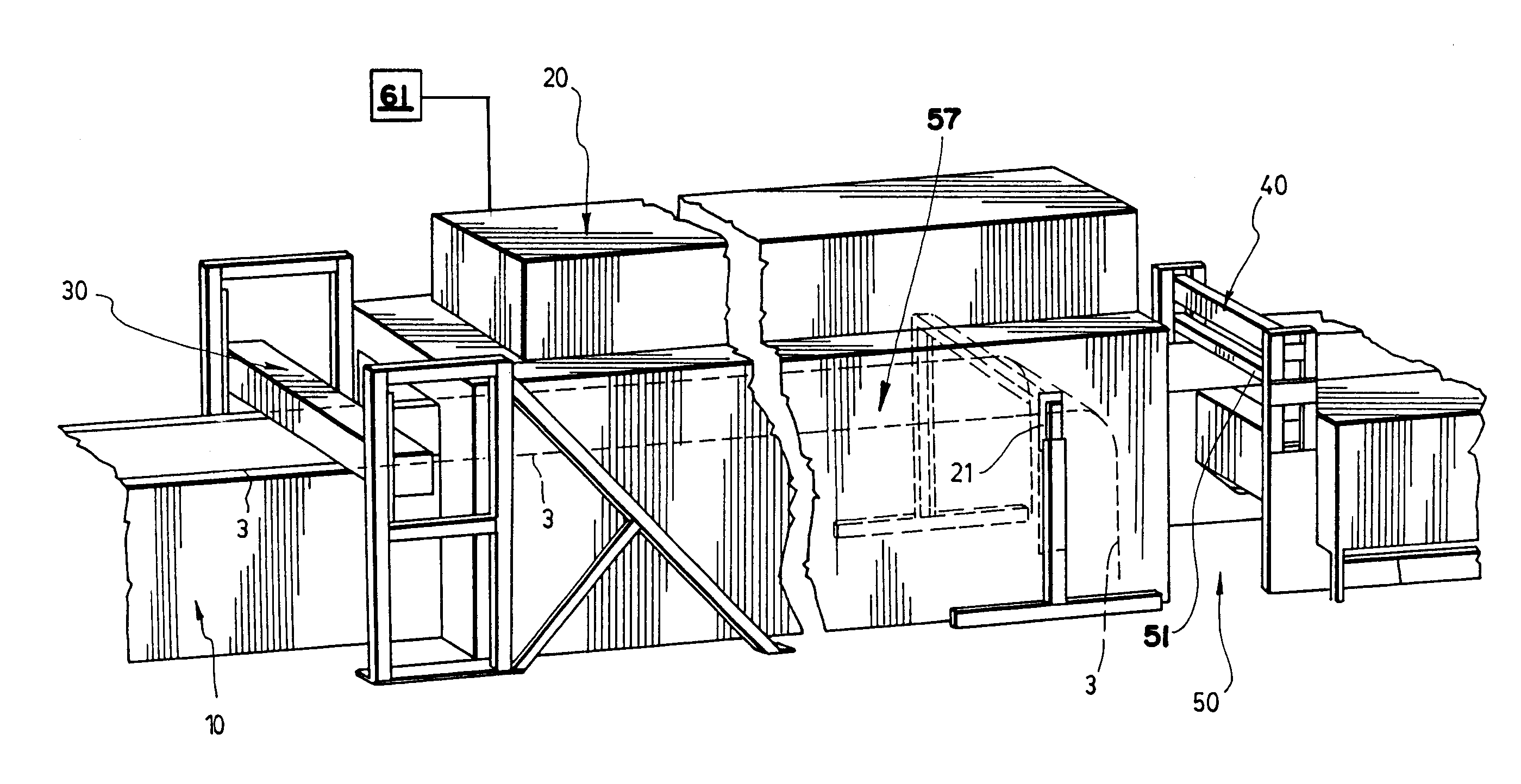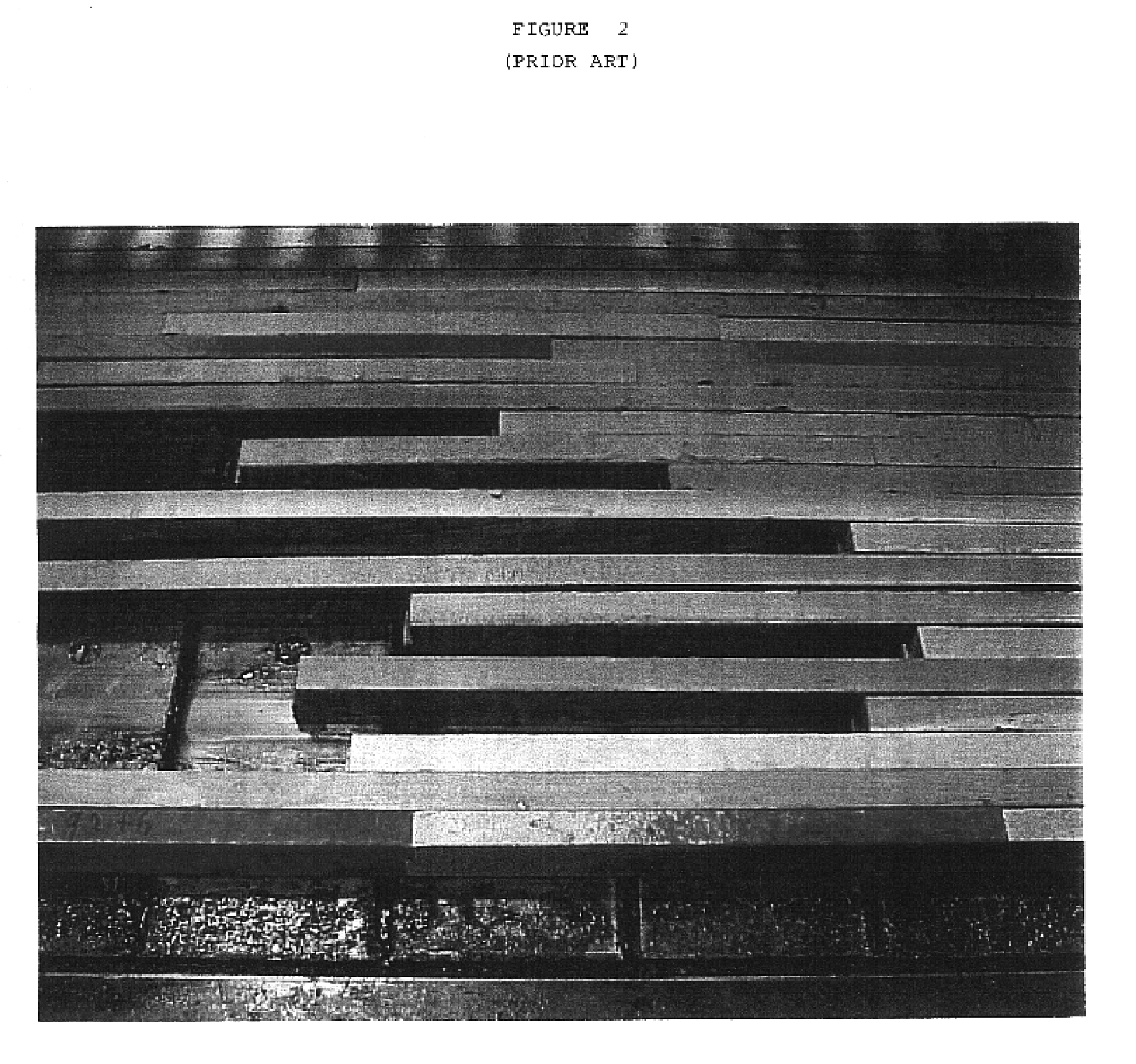Wood flooring for use in making trailer and container floors, and method and apparatus for making the same
a technology for trailers and containers, applied in the direction of soldering auxiliary devices, soldering apparatus, paper/cardboard containers, etc., can solve the problems of avoiding the risk of water leaking through, affecting the mechanical properties of the floorboard, and the end of the hook of each stick is affected, so as to improve the mechanical properties, the effect of protecting against humidity and fatigue resistan
- Summary
- Abstract
- Description
- Claims
- Application Information
AI Technical Summary
Benefits of technology
Problems solved by technology
Method used
Image
Examples
Embodiment Construction
[0037]To alleviate the above-mentioned problems, a novel joint and a new production equipment and method was designed, tested and refined to improve over conventional wood flooring. The new wood flooring is essentially the same as that of the conventional wood flooring except for the design of the joint, and the equipment used to produce it. The new joint, designated as a finger joint, is highly resistant to the passage of water, seals the bottom of the wood member and solves the problem of leaky hook joints. Also, the finger joint improves the mechanical properties of the flooring and therefore the thickness of the laminated wood can be reduced. Thus, thinner and lighter wood flooring can be produced with equivalent strength when compared to thicker conventional wood flooring. Since the finger joint provides a dramatic diminution of the “pop-out” of lumber strips, the fatigue resistance of the wood flooring can be improved over that of the conventional wood flooring.
[0038]Initially...
PUM
| Property | Measurement | Unit |
|---|---|---|
| width | aaaaa | aaaaa |
| width | aaaaa | aaaaa |
| length | aaaaa | aaaaa |
Abstract
Description
Claims
Application Information
 Login to View More
Login to View More - R&D
- Intellectual Property
- Life Sciences
- Materials
- Tech Scout
- Unparalleled Data Quality
- Higher Quality Content
- 60% Fewer Hallucinations
Browse by: Latest US Patents, China's latest patents, Technical Efficacy Thesaurus, Application Domain, Technology Topic, Popular Technical Reports.
© 2025 PatSnap. All rights reserved.Legal|Privacy policy|Modern Slavery Act Transparency Statement|Sitemap|About US| Contact US: help@patsnap.com



